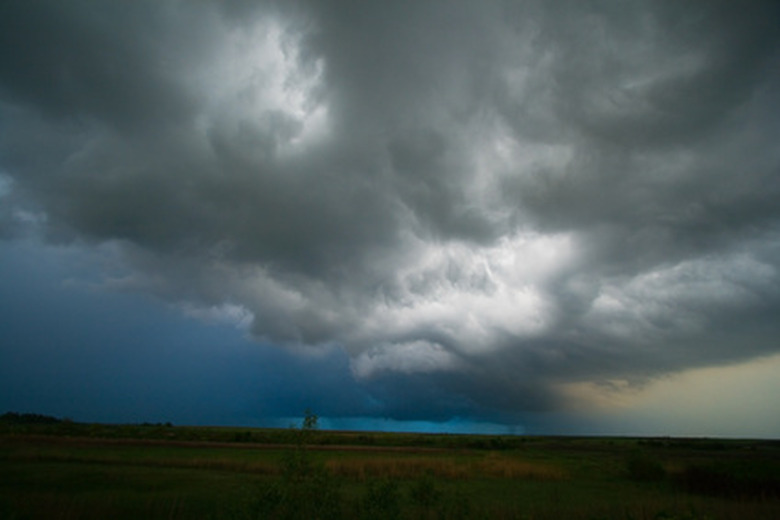How To Find Relative Humidity
Whether completing a school science experiment or other weather related project, it may be useful to know relative humidity and ways in which it might be measured. Relative humidity (RH) is how much water vapor there is in the air expressed in ratio form in comparison to how much water the air can actually contain. Relative humidity changes constantly. It relies on variable factors such as temperature, dew point and air saturation.
Step 1
Obtain two glass thermometers with round cylindrical bulbs and Fahrenheit measurement scales. Place them on a stable surface where they stand freely and are exposed to air.
Step 2
Find dry bulb air temperature. Because the amount of water vapor in the air increases with temperature, you need to know the air temperature to find relative humidity. Use a bulb thermometer set in a neutral, dry location and out of direct sunlight to find air temperature.
Step 3
Measure the wet bulb temperature by wrapping a thermometer bulb in wet muslin material and allowing air to flow past normally. Evaporation from the wet bulb helps determine the level of humidity in the air.
Step 4
Determine the dew point using a graph, psychrometric slide rule, calculator or psychrometric tables. Plug in the temperature readings from both the wet and dry thermometers to find relative humidity.
Step 5
Apply formulas to find relative humidity. Convert Fahrenheit to Celsius by using the formula Tc=5.0/9.0x(Tf-32.0) or (4) Tdc=5.0/9.0x(Tdf-32.0). Tc stands for Celsius temperature. Tf represents Fahrenheit. Tdc is Celcius dew point. Tdf means Fahrenheit dew point. Once this is completed, calculate actual and saturated vapor pressure with the formula 6.11x10.0x(7.5xTc/(237.7+Tc)) for actual vapor pressure and 6.11x10.0x(7.5xTdc/(237.7+Tdc)) for saturated vapor pressure.
Step 6
Divide actual vapor pressure by saturation vapor pressure and multiply by 100 to obtain a percentage using the formula Relative Humidity (percentage) = actual vapor pressure/saturated vapor pressure x100. The resulting number indicates relative humidity.
Things Needed
- Bulb thermometers
- Muslin cloth
- Water
- Psychrometric slide rule or calculator
- Psychrometric graph
Warning
Relative humidity calculation results may vary by 10% or more from actual levels due to individual variables.
Cite This Article
MLA
McDaniel, Robin. "How To Find Relative Humidity" sciencing.com, https://www.sciencing.com/relative-humidity-7611453/. 24 April 2017.
APA
McDaniel, Robin. (2017, April 24). How To Find Relative Humidity. sciencing.com. Retrieved from https://www.sciencing.com/relative-humidity-7611453/
Chicago
McDaniel, Robin. How To Find Relative Humidity last modified August 30, 2022. https://www.sciencing.com/relative-humidity-7611453/
